Hanfu Guide: Ming Dynasty

Ming Dynasty hanfu is a stunning representation of traditional Chinese clothing, blending elegance, practicality, and a deep sense of history. Worn between 1368 and 1644, this iconic attire reflects the Ming era’s focus on propriety and social order while showcasing exquisite craftsmanship. In this hanfu guide, we’ll explore five key features of Ming Dynasty hanfu that made it a cornerstone of hanfu history and Ming Dynasty fashion.
Ming Dynasty Hanfu, with its opulent designs, is a stunning chapter in traditional Chinese clothing. Its grandeur reflects the era’s cultural values. Want to uncover its elegance? Dive in!
Emperor Zhu Yuanzhang, the Ming founder, established a clothing system based on the principle of “inheriting Zhou and Han, adopting Tang and Song.” Thus, the basic structure continued Tang and Song influences. By the mid-to-late Ming, new styles like stand-up collars and prominent buttons on clothing emerged, unseen in earlier dynasties.
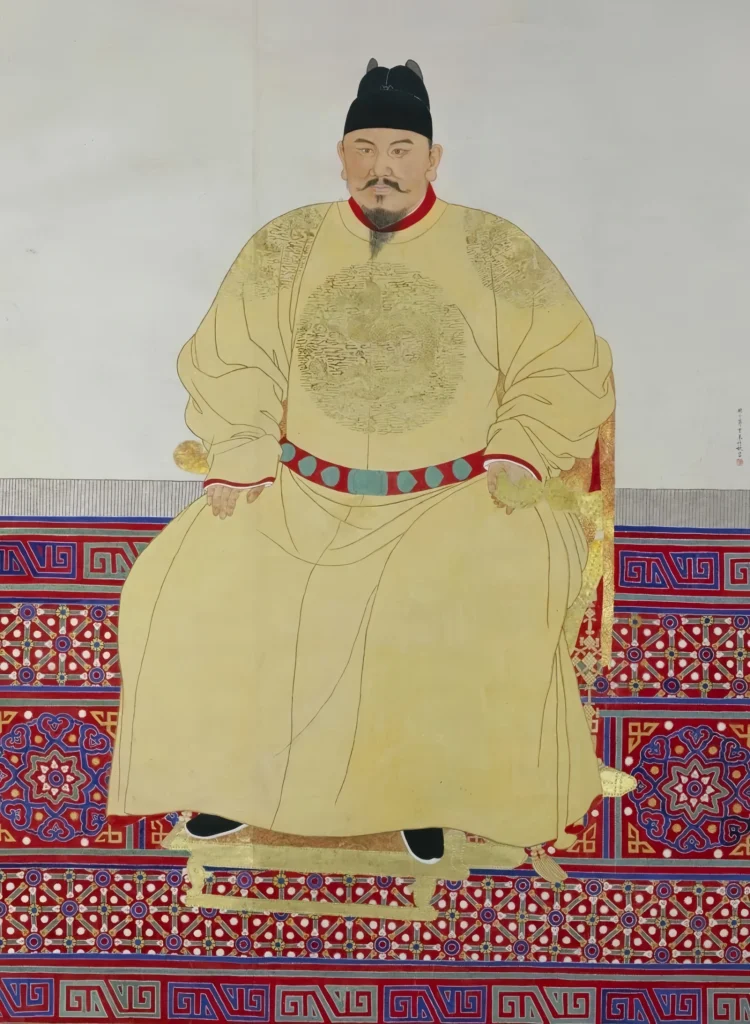
A distinctive garment was the xiapei, a shawl-like accessory as beautiful as colorful clouds, earning its name “cloud shawl.”
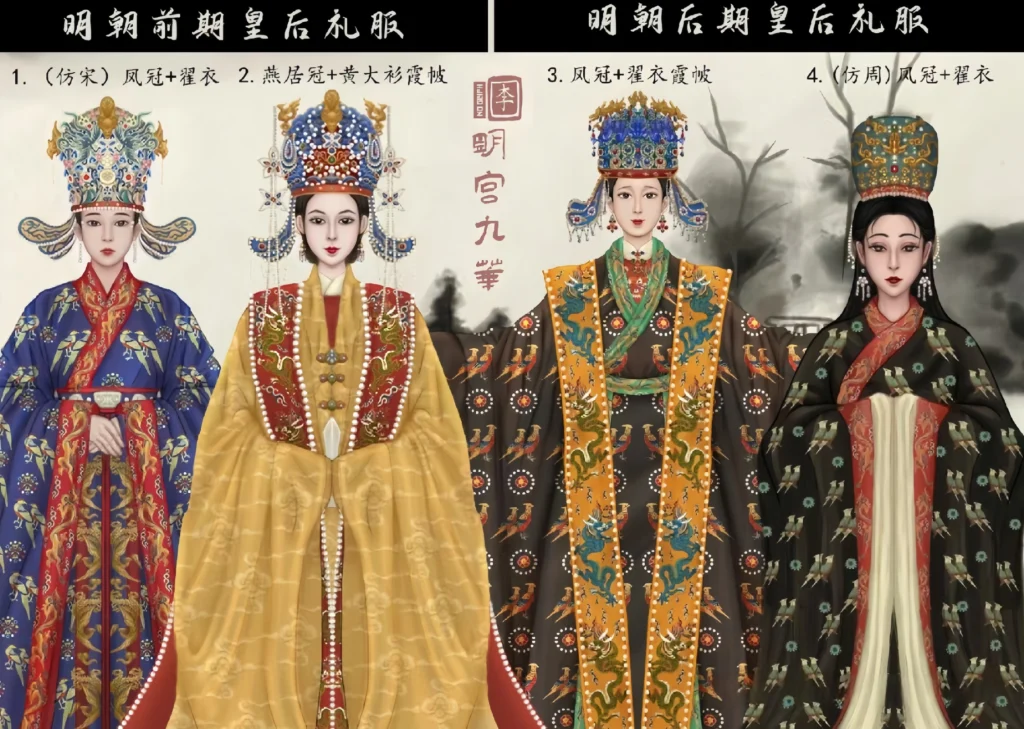
Overview of Ming Dynasty Clothing
Women’s Clothing: Focused on shirts, jackets (ao), xiapei, beizi (long jackets), bijia (sleeveless vests), and skirts, with styles largely inspired by Tang and Song. Xiapei, beizi, and bijia were symmetrical, open-front designs with slits on both sides.
Men’s Clothing: Confucian scholars often wore round-collared, wide-sleeved robes with black trim and paired them with black sashes and soft, trailing headscarves.
Official Attire: Court attire followed ancient traditions, using crowns and robes. For major ceremonies like sacrifices or winter solstice, all officials, regardless of rank, wore beam crowns and red silk robes. Rank was distinguished by robe color, the number of beams on the crown, scepters, and ribbons. For daily duties, officials wore regular attire.
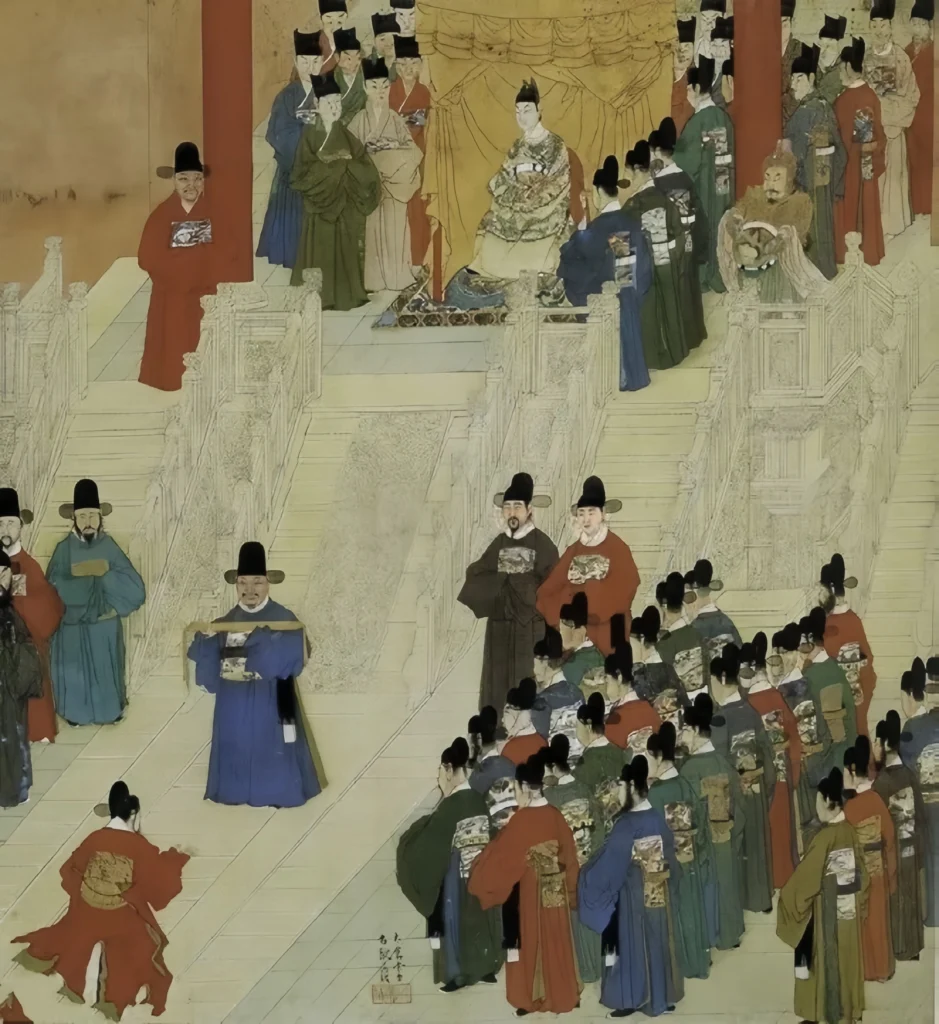
1. Style System: Balancing Rigor and Practicality
Ming Women’s Clothing
Prominent women’s accessories were ornate, with the fengguan xiapei (phoenix crown and cloud shawl) being the most iconic. Strict rules governed attire and accessories based on social status. Common women’s garments included ruqun (jacket and skirt), beizi, jackets (ao), shirts, yunjian (cloud collars), and robes.
The structured beauty of Ming Dynasty fashion shines through in its intricate Ming women’s clothing.
Shanqun (Shirt and Skirt)
Excavations from a Ming-era tomb in Wuxi provide key evidence of Ming women’s clothing. A typical three-piece set included: an inner long-sleeved shirt made of plain silk with a swastika-grid pattern, and an outer short-sleeved silk shirt with two ties at the front.

Aoqun (Jacket and Skirt)
Style: The jacket featured a cross or stand-up collar, reaching the waist or hips, with varied sleeve types (straight or pipa-shaped). The skirt was the mamian skirt, characterized by flat panels (called “skirt doors”) at the front and back, with pleats on the sides. When walking, the flat panels stayed still while the pleats flared, blending elegance with movement.
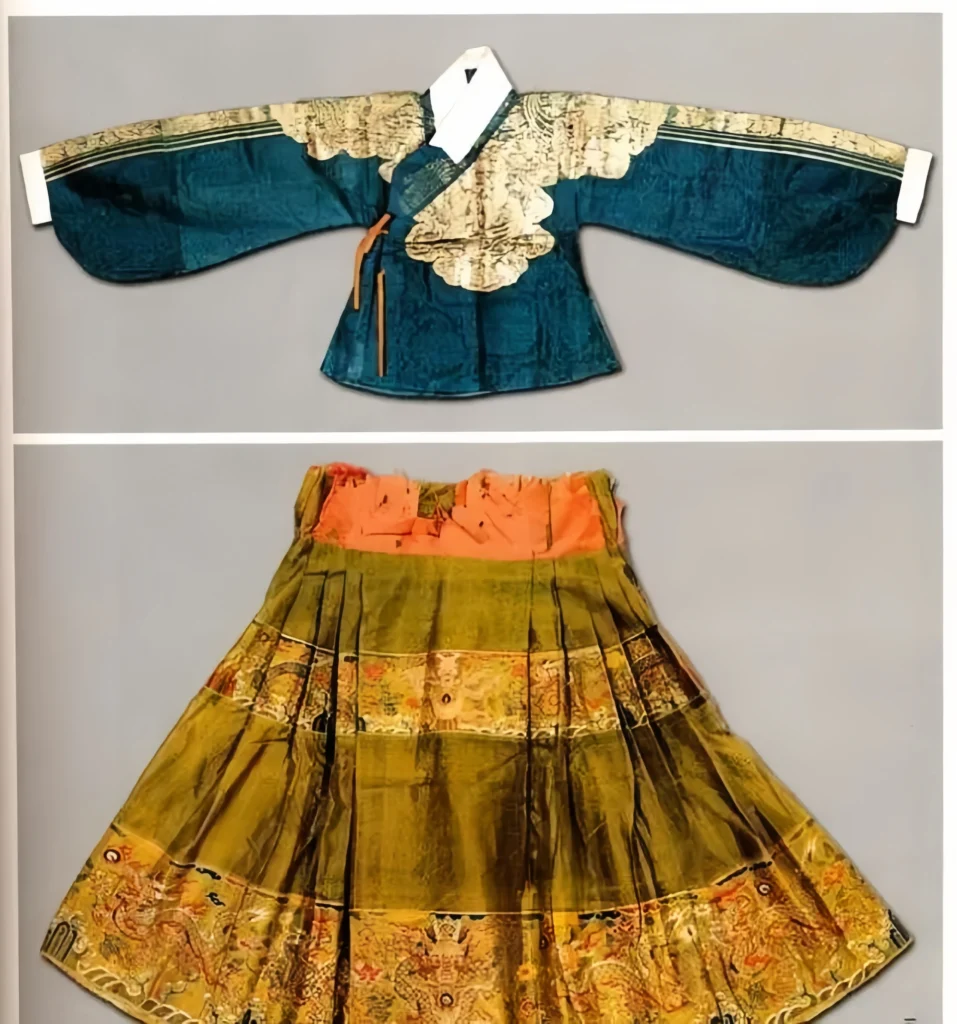
Mamian Skirt
From the front, the skirt had a flat, unpleated panel (the “horse face” or mamian), with pleats on the sides, named after a defensive wall structure in architecture.
Evolution: Early Ming skirts were plain with narrow sleeves; by the mid-to-late Ming, wide sleeves, woven gold trim, and stand-up collars became popular, with the latter being a Ming innovation that influenced later eras.
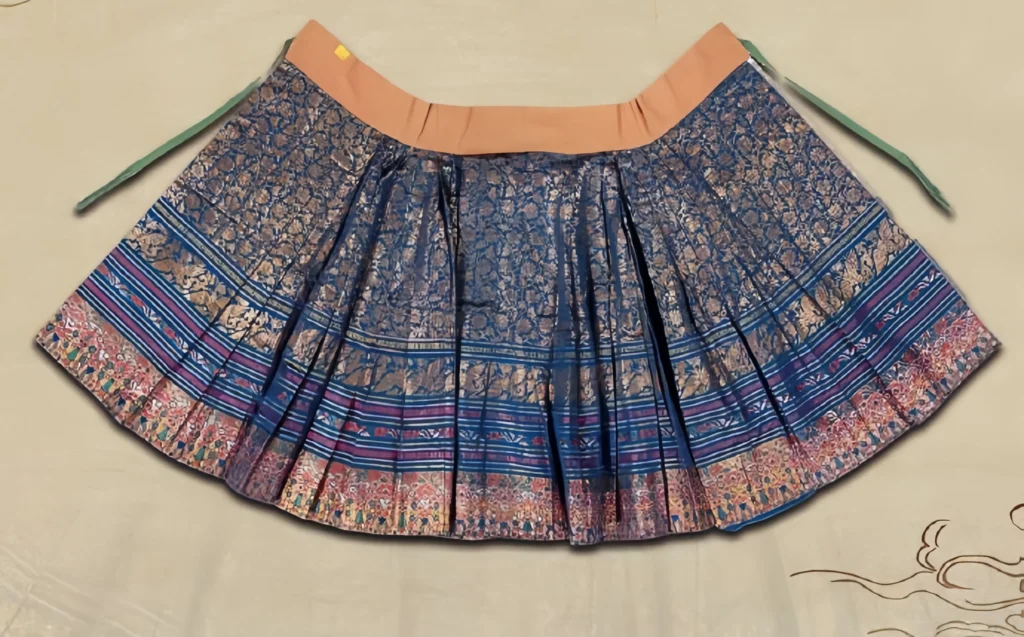
Bijia (Sleeveless Vest)
A long, open-front sleeveless vest, reaching the knees or ankles, often decorated with metal buttons or embroidery. In winter, it could be lined with cotton for warmth, serving both style and function.
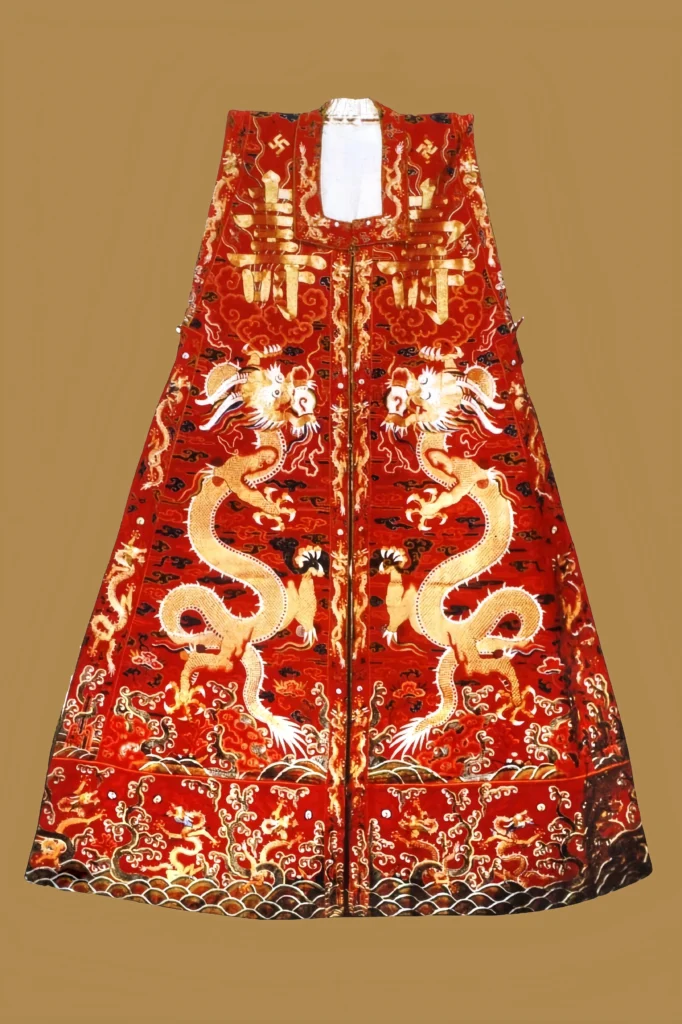
Cloak (Pifeng)
An open-front, straight-collared, wide-sleeved outer garment with side slits, often paired with an embroidered yunjian (cloud collar) by noblewomen for outings or banquets to highlight status.
Ming Men’s Clothing
Ming men’s attire typically included loose, long robes for elites, paired with square, flat-topped headscarves. Commoners wore short jackets and wrapped headscarves. A unique cap emerged, sewn from six or eight fabric pieces, resembling a halved watermelon.
Daopao (Taoist Robe)
In the mid-to-late Ming, literati innovated clothing, favoring the daopao, a cross-collared, loose-sleeved robe (often with pipa-shaped cuffs) due to the emperor’s promotion of Taoism. Made from hemp, ramie, silk, or gauze, it varied in thickness by season. The robe had side slits and inner panels to cover the legs.

Zhishen/Zhishui (Straight Robe)
A long, single-piece robe with wide sleeves and a tied waist, used for scholarly gatherings or home wear.
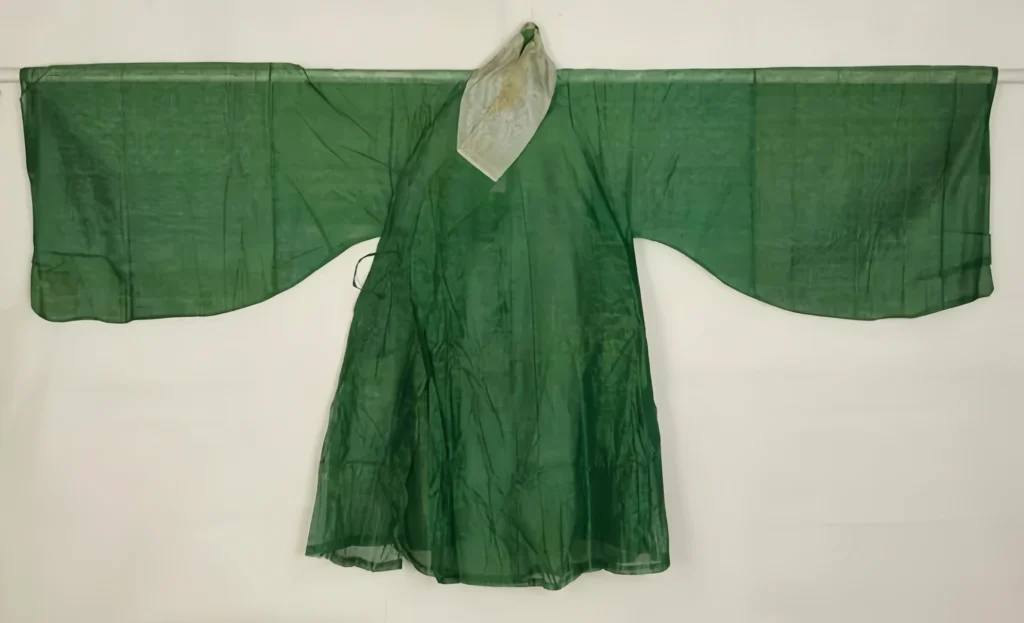
Tieli (Pleated Robe)
A two-piece robe with a horizontally pleated waist, ideal for horseback riding or labor, commonly worn by military officials and commoners.
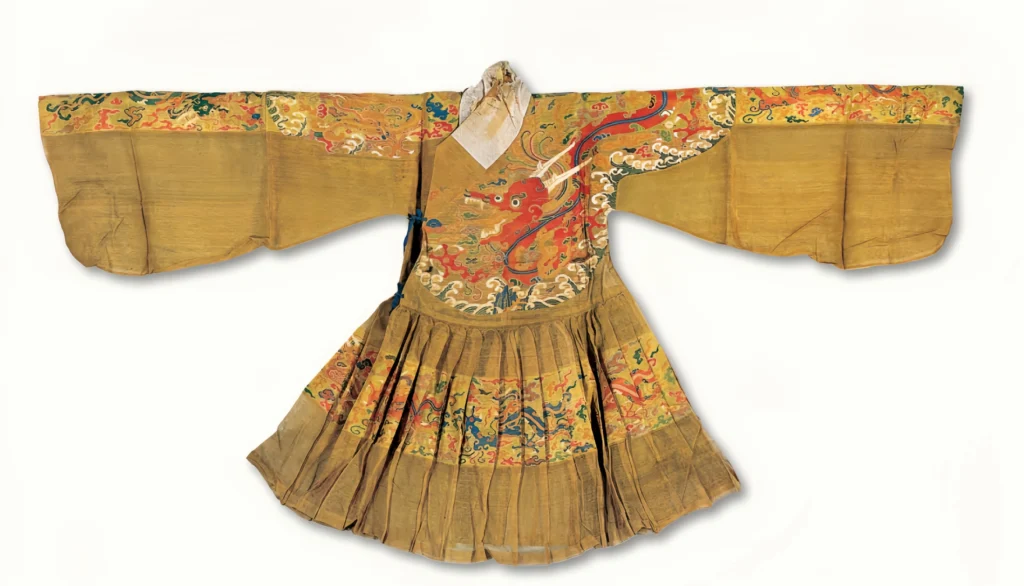
Zhaojia (Sleeveless or Short-Sleeved Vest)
Originally military attire, this open-front vest was later adopted for civilian use, worn over robes like a modern vest.
2. Colors and Patterns: Propriety and Auspicious Meanings
Color Hierarchy
Imperial Privilege: Bright yellow and red were reserved for the emperor and empress; the crown prince wore black with a reddish hue (xuan), and princes used vermilion (dan).
Official and Commoner Distinction: Officials’ colors depended on rank—scarlet for ranks one to four, cyan for five to seven, green for eight to nine. Commoners were barred from gold embroidery or brocade, using plain cotton or hemp.
Pattern System
Court Patterns:
- Dragon Motifs: Five-clawed dragons were exclusive to the emperor; four-clawed pythons (mang) were granted to high officials, with flying fish or bullfight patterns for senior ranks.
- Twelve Symbols: Patterns like sun, moon, stars, mountains, and dragons were embroidered on imperial robes, symbolizing supreme authority.
Folk Auspicious Patterns:
- Plants: Twining lotus (purity), peony (wealth), lingzhi mushroom (longevity).
- Animals: Egrets (career success), magpies on plum branches (joy), bats (good fortune).
- Combinations: “Gourd for Generations” (gourd with vines), “Everything as Desired” (persimmon with ruyi scepter).
3. Materials and Craftsmanship: Pinnacle of Artistry
Silk Masterpieces
- Yunjin (Cloud Brocade): Known for its “makeup weaving” technique, blending gold thread, peacock feathers, and colored silk for a 3D embossed effect, often used for imperial dragon robes.
- Kesi (Slit Weaving): A “through-warp, broken-weft” technique creating carved-like patterns, used for dragon robes and rank badges, taking years to complete a single piece.
- Woven Gold Satin: Cotton threads wrapped in gold foil, woven into fabric, shimmering under sunlight, used for jacket trim or cloaks.
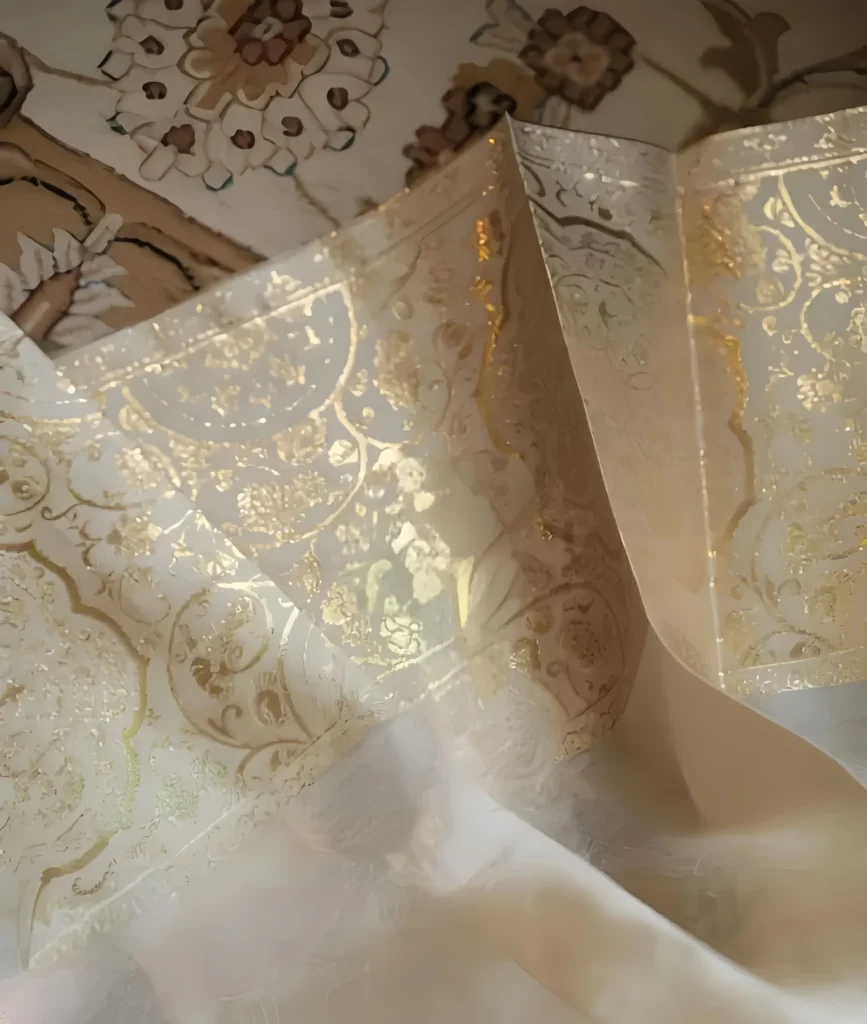
Cotton Revolution
Huang Daopo’s innovations in cotton spinning made Songjiang cotton cloth widely popular, replacing hemp for commoners. Blue-printed and early tie-dyed fabrics emerged.
4. Accessories and Hairstyles: Detailed Propriety
Women’s Adornments
- Diji (Ornate Hairpiece): A net-like metal frame covered with black gauze, adorned with a full set of “head ornaments” (central picks, side pins, ear covers, and symmetrical hairpins).
- Eyebrow Styles: Early Ming favored delicate “distant mountain brows”; late Ming, influenced by opera, introduced bold “sorrowful brows” or gradient “reverse晕 brows.”
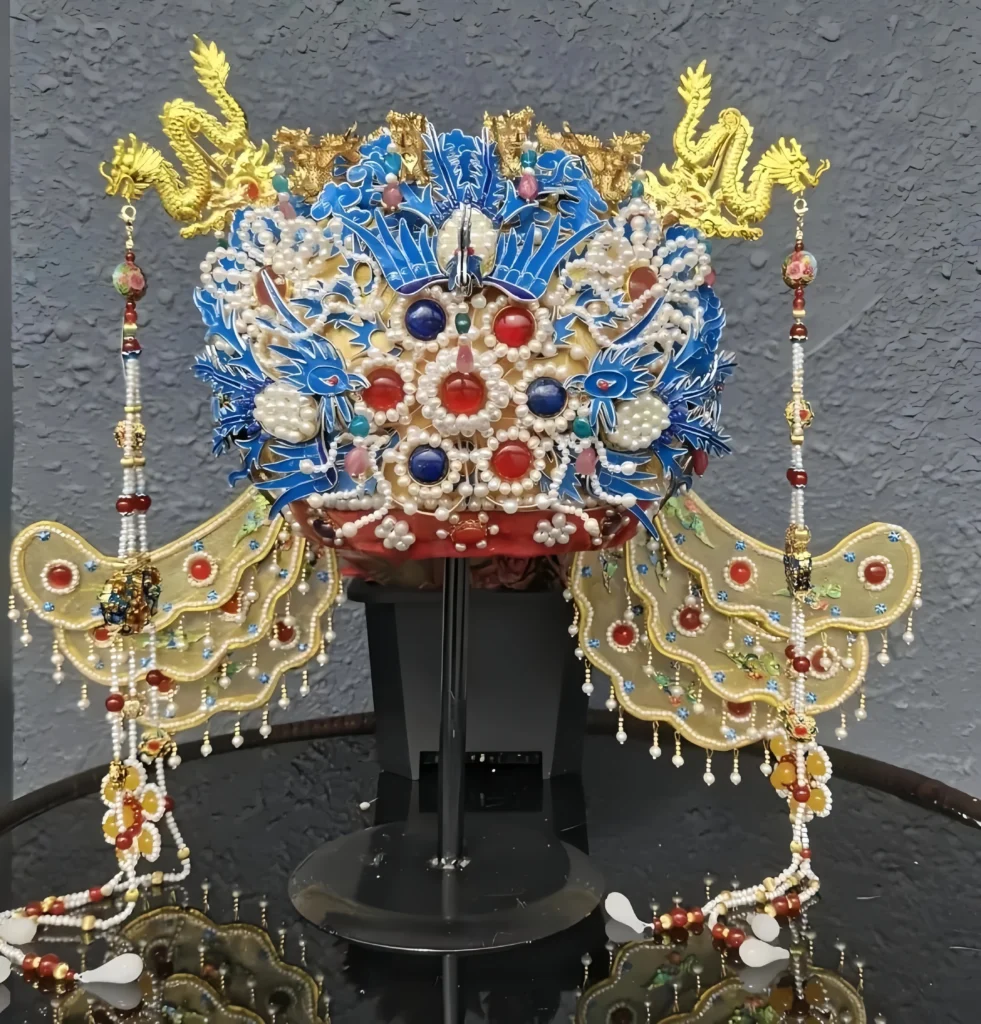
Men’s Headwear and Belts
- Wusha Hat (Black Gauze Cap): Standard for officials, low in front and high in back, with wing-like extensions (wing length indicated rank).
- Belt System: Jade belts for first rank, rhinoceros horn for second, gold for third to fifth, silver for sixth to seventh, and black horn for eighth to ninth, with specific ornament counts.
5. Social Hierarchy and Clothing Regulations
Rank Badge System
Officials’ robes featured square “rank badges” (buzi) on the chest and back. Civil officials had bird motifs (first rank: crane; second rank: golden pheasant), while military officials had beasts (first rank: qilin; second rank: lion), distinguishing nine ranks and 18 levels.
Anti-Luxury Rules
Common women’s skirts were limited to five widths and banned from gold embroidery. Merchants, despite wealth, were restricted to plain silk or cloth, not satin.
Why Ming Dynasty Hanfu Still Matters
Ming hanfu centered on propriety, with meticulous designs and craftsmanship that synthesized historical techniques. It upheld social order through rank badges and anti-luxury rules while embracing worldly aesthetics via auspicious patterns and widespread cotton use. Its cross-collared, right-over-left, wide-robed style profoundly influenced East Asian clothing systems and remains a vital part of cultural revival today.
For more on Ming Dynasty culture, visit History.com’s Ming Dynasty Overview. To explore hanfu craftsmanship, check out China National Silk Museum.



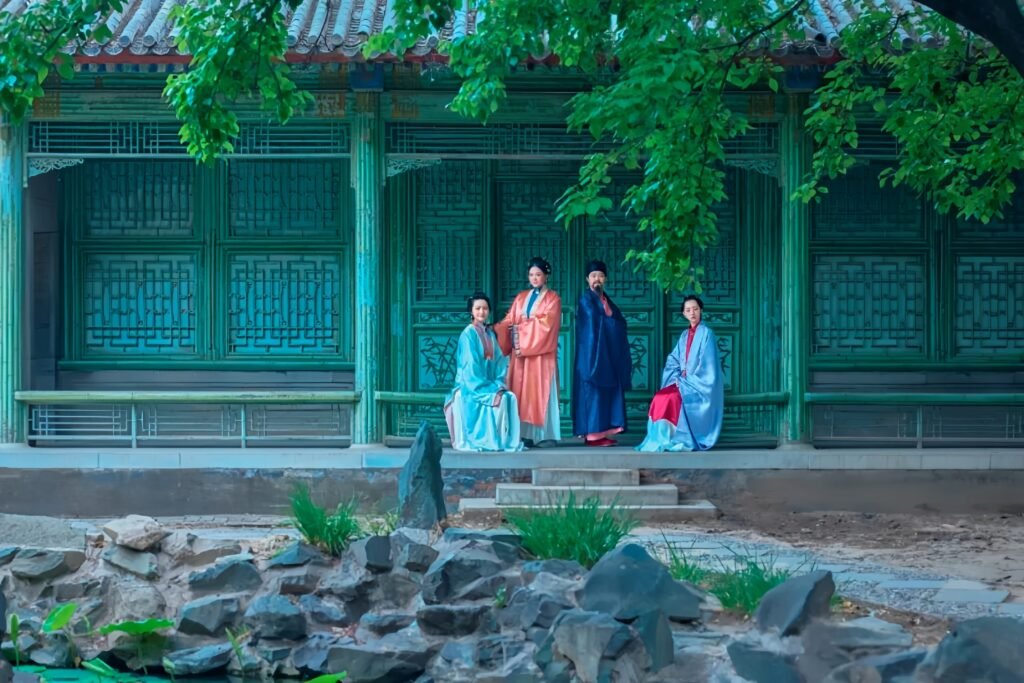

Responses